
A drum machine is an electronic musical instrument that creates percussion sounds, drum beats, and patterns. Drum machines may imitate drum kits or other percussion instruments, or produce unique sounds, such as synthesized electronic tones. A drum machine often has pre-programmed beats and patterns for popular genres and styles, such as pop music, rock music, and dance music. Most modern drum machines made in the 2010s and 2020s also allow users to program their own rhythms and beats. Drum machines may create sounds using analog synthesis or play prerecorded samples.

Digital music technology encompasses the use of digital instruments to produce, perform or record music. These instruments vary, including computers, electronic effects units, software, and digital audio equipment. Digital music technology is used in performance, playback, recording, composition, mixing, analysis and editing of music, by professions in all parts of the music industry.
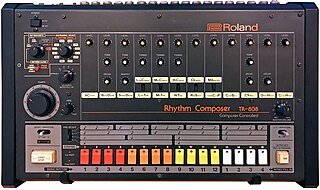
The Roland TR-808 Rhythm Composer, commonly known as the 808, is a drum machine manufactured by Roland Corporation between 1980 and 1983. It was one of the first drum machines to allow users to program rhythms instead of using preset patterns. Unlike its nearest competitor at the time, the more expensive Linn LM-1, the 808 generates sounds using analog synthesis rather than by playing samples.

A sampler is an electronic musical instrument that records and plays back samples. Samples may comprise elements such as rhythm, melody, speech, sound effects or longer portions of music.

An electronic keyboard, portable keyboard, or digital keyboard is an electronic musical instrument based on keyboard instruments. Electronic keyboards include synthesizers, digital pianos, stage pianos, electronic organs and digital audio workstations. In technical terms, an electronic keyboard is a rompler-based synthesizer with a low-wattage power amplifier and small loudspeakers.

Oberheim is an American synthesizer manufacturer founded in 1969 by Tom Oberheim.

The Roland TR-909 Rhythm Composer, commonly known as the 909, is a drum machine introduced by Roland Corporation in 1983, succeeding the TR-808. It was the first Roland drum machine to use samples for some sounds, and the first with MIDI functionality, allowing it to synchronize with other devices. Though a commercial failure, it influenced the development of electronic dance music genres such as techno, house and acid house.
There are several subgenres of reggae music including various predecessors to the form.
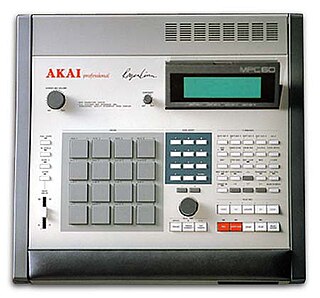
The Akai MPC is a series of music workstations produced by Akai from 1988 onwards. MPCs combine sampling and sequencing functions, allowing users to record portions of sound, modify them and play them back as sequences.

Roger Curtis Linn is an American designer of electronic musical instruments and equipment. He is the designer of the LM-1, the first drum machine to use samples, and the MPC sampler, which had a major influence on the development of hip hop. Roger Linn is also a member of the Dead Presidents Society, a group of innovators in the field of electronic music.

Hip hop production is the creation of hip hop music in a recording studio. While the term encompasses all aspects of hip hop music creation, including recording the rapping of an MC, a turntablist or DJ providing a beat, playing samples and "scratching" using record players and the creation of a rhythmic backing track, using a drum machine or sequencer, it is most commonly used to refer to recording the instrumental, non-lyrical and non-vocal aspects of hip hop.
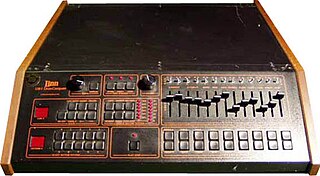
The Linn LM-1 Drum Computer is a drum machine manufactured by Linn Electronics and released in 1980. It was the first drum machine to use samples of acoustic drums, and one of the first programmable drum machines. Its designer, the American engineer Roger Linn, wanted a machine that would produce more realistic drum sounds and offer more than preset patterns.
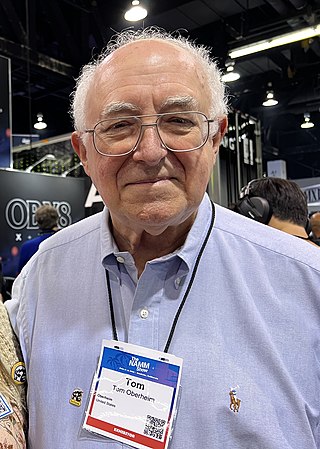
Thomas Elroy Oberheim, known as Tom Oberheim, is an American audio engineer and electronics engineer best known for designing effects processors, analog synthesizers, sequencers, and drum machines. He has been the founder of four audio electronics companies, most notably Oberheim Electronics. He was also a key figure in the development and adoption of the MIDI standard. He is also a trained physicist.
David Franklin Reeves Jr. is an American musician, DJ, and producer best known for his work in cooperation with Run-DMC, Kurtis Blow, The Fat Boys, and Jam Master Jay. An early associate of Russell Simmons and Larry Smith, Dave first made his name in the 1980s.
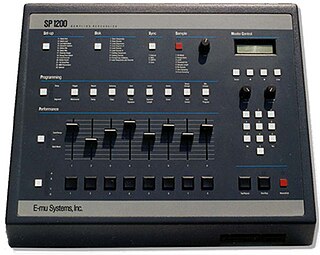
The E-mu SP-1200 is a sampling drum machine designed by Dave Rossum and released in August 1987 by E-mu Systems. Like its predecessor, the SP-12, it was designed as a drum machine featuring user sampling. The distinctive character of its sound, often described as "warm," "dirty," and "gritty," and attributed to SP-1200's low 26.04 kHz sampling rate, 12-bit sampling resolution, drop-sample pitch-shifting, and analog SSM2044 filter chips (ICs), has sustained demand for the SP-1200 more than thirty-five years after its debut, despite the availability of digital audio workstations and samplers/sequencers with superior technical specifications.

The LinnDrum, also referred to as the LM-2, is a drum machine manufactured by Linn Electronics between 1982 and 1985. About 5,000 units were sold.

E-mu Systems was a software synthesizer, audio interface, MIDI interface, and MIDI keyboard manufacturer. Founded in 1971 as a synthesizer maker, E-mu was a pioneer in samplers, sample-based drum machines and low-cost digital sampling music workstations.

In sound and music, sampling is the reuse of a portion of a sound recording in another recording. Samples may comprise elements such as rhythm, melody, speech, or sound effects. A sample can be brief and only incorporate a single musical note, or it can consist of longer portions of music, and may be layered, equalized, sped up or slowed down, repitched, looped, or otherwise manipulated. They are usually integrated using electronic music instruments (samplers) or software such as digital audio workstations.

Undisputed is the seventh studio album by American rapper DMX, his first studio album in six years since Year of the Dog... Again (2006) and the last to be released during his lifetime. It was released on September 11, 2012, on Seven Arts Music.
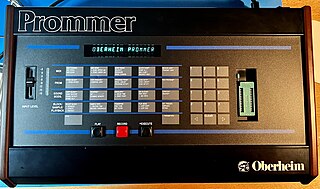
The Oberheim Prommer is a monophonic sampler capable of programming EPROM chips for use in Oberheim DMX, Linn, Simmons, and Sequential drum machines, allowing you to use your own samples in these devices. The device can be triggered by MIDI, or via Oberheim's pre-MIDI parallel bus.





















